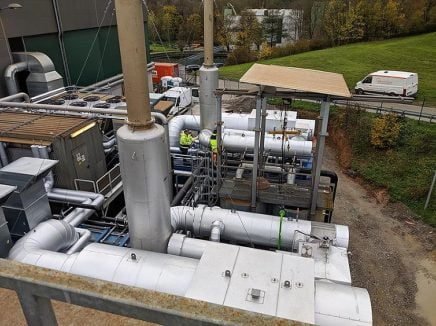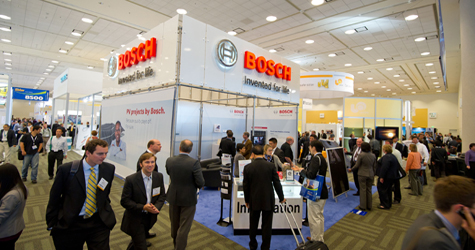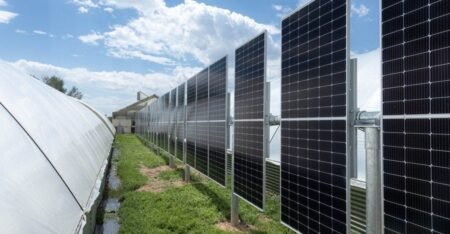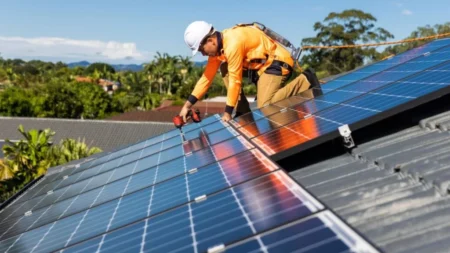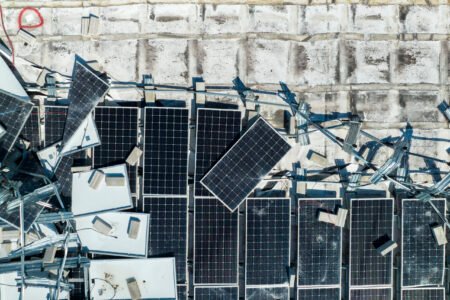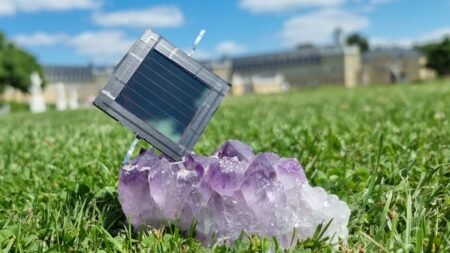The Rems-Murr waste management company in Backnang-Neuschöntal in Baden- Württemberg has two new energy-efficient combined heat and power plants in which methane from biogas plants is co-incinerated. From 2023 onwards, they will emit five times less nitrogen oxide than today.
On 23 October 2019, two new combined heat and power (CHP) plants of the municipal waste management company Rems-Murr (AWRM) went into operation in Backnang-Neuschöntal. They were built by the company ETW Energietechnik GmbH from Moers in North Rhine-Westphalia. For the renewal, the two old gas engines of the waste management company were replaced after 65,000 operating hours and more than eight years of operation. This resulted in a leap in efficiency, which is essentially based on the installation of the larger, more powerful gas engines as well as the further developed gas engine technology. In addition, fuel savings are achieved by using the residual methane content in the fermentation residue exhaust air.
ETW Energietechnik took a step-by-step approach to this: First the used CHP engines with 800 kilowatts (kW) each were dismantled. At the same place the company ins- talled two new larger gas engines with an electrical output of 1560 and 1200 kilowatts. These are each container CHP units, i.e. the power plants fit into a special container measuring 14 by 3.2 by 3 metres.
First of all, there is the container CHP „ETW 1560 BG“ with a gas genset MWM TCG 2020 V16 (electrical output: 1560 kW, thermal output: 1528 kW, fuel input: 3683 kW). The second is the container CHP „ETW 1200 BG“ with a gas aggregate MWM TCG 2020 V12 (electrical output: 1200 kW, thermal output: 1153 kW, fuel input: 2804 kW).
Compared with the old gensets, the changeover increases the electrical efficiency by almost 1.6 percentage points: Whereas the used CHP units had an electrical efficiency of 40.4 percent, this now amounts to 42 percent. The overall efficiency of the plant increases slightly to 85 percent.
The heat utilisation concept contributes significantly to this high figure. The waste heat from the block-type thermal power stations is used to heat the fermenters and the operating building. The excess waste heat is then made available to the city of Backnang for drying sewage sludge.
A further leap in efficiency is achieved by a special feature of the plant: fermentation residue exhaust air is added to the combustion air of the gas engines. Although this exhaust air has too low a methane content (less than 1.75 percent) for it to be used directly in a gas engine, the plant is able to use it in a gas engine. However, by mixing it into the combustion air, the low methane content is made usable. This has a further advantage: This methane content in the combustion air does not have to be supplied via the biogas pipe and can therefore be saved on the biogas side.
„This was the first time that we have equipped an ETW plant in this way“, reports Alexander Szabo. The engineer is the responsible sales manager at ETW Energietechnik. The municipal waste management company hopes that this exchange will enable it to make CHP operation more variable in the future due to the higher engine output while maintaining the same gas quantities during the day. In addition, the waste management company is expecting an increase in the amount of electricity fed into the public grid.
For the pilot project, the fermentation residue exhaust air extracted from the liquid fertilizer storage tanks and the sedimentation tank of the biogas plant is cleaned by a gas washer-dryer and then fed into the combustion air supply of the gas engines. To avoid an ignitable mixture in the combustion air, the fermentation residue exhaust air freed from hydrogen sulphide (H2S) is continuously monitored by means of a gas analysis.
The system update is sustainable in that two expected changes in legislation in Germany are already being fulfilled:
– One is the use of residual methane in the fermentation residue exhaust air to prevent the greenhouse gas from escaping. This system was designed by the planning company Ingenieurgruppe RUK GmbH from Stuttgart.
– It has already been decided that CHP plants from 2023 may not emit more than 100 milligrams of nitrogen oxides (NOx) per cubic meter. Currently, this upper limit is 500 mg/m3. These values apply in each case at a residual oxygen content of five percent. This is stated in the Ordinance on Medium-Sized Combustion, Gas Turbine and Inter- nal Combustion Engine Installations, the 44th Federal Immission Control Ordinance (44th BImSchV), which was updated in June 2019.
In order to avoid later, costly retrofitting of the exhaust system, both cogeneration plants have therefore already been equipped with modern nitrogen oxide catalytic converters. The catalytic elements are mounted on a ceramic carrier. This SCR technology – SCR stands for „Selected Catalytic Reduction“ – is the only technology for reducing the amount of sick oxides (NOx) in the exhaust gas of the gas engine. The nitrogen oxi- des in the exhaust gas are composed of nitrogen monoxide (NO) and nitrogen dioxide (NO2).
To reduce nitrogen oxides, Adblue must be injected into the exhaust system – this mixture has a urea content of 32.5 percent. The high exhaust gas temperature converts Adblue into ammonia. The ammonia reacts with the nitrogen oxides on the catalytic surface of the catalyst elements with the following reaction formula: 4NO + 4NH3 + O2 4N2 + 6H2O
ETW Energietechnik has already installed some of the SCR catalytic converter elements. These reduce – even without urea injection – formaldehyde in the exhaust gas. Formaldehyde (CH2O) is converted into water and CO2. The complete SCR catalytic converter system including urea injection will not go into operation until 2023. In order to comply with the stricter limits, only minor retrofitting is then required due to the modern exhaust gas cleaning system (see below).
Following the award of the contract for the new CHP plants, ETW Energietechnik GmbH was also awarded the contract for the extension of the waste fermentation plant. This includes the entire process, measurement and control technology. The scope of supply also includes the gas wash drying plant for the fermentation residue exhaust air.
Retrofitting for NOx reduction In 2022, ETW Energietechnik will retrofit the two combined heat and power plants so that they can comply with the limit value for nitrogen oxides of 100 mg/m3 from 2023 onwards:
A urea tank, the stainless steel piping between urea tank and injection, a suction line into the gas engine and a urea dosing device are still needed. This requires an air compressor, pressure and temperature sensors, nitrogen oxide and oxygen sensors upstream and downstream of the catalytic converter. For this purpose, the catalyst housing is completely equipped with catalyst elements.



